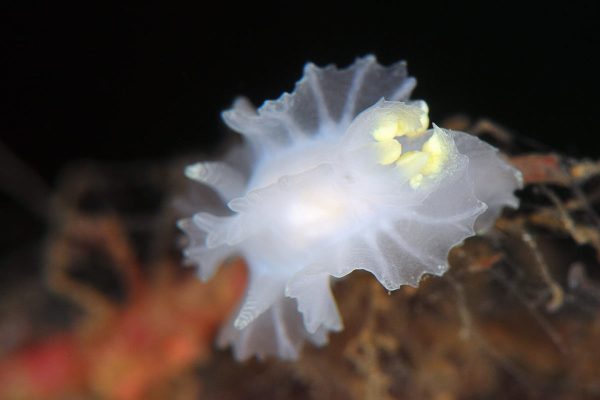UW photography and nudibranchs
This is the event for you if you shoot pictures or like nudibranchs. Joining us will lift your knowledge of how to find and identify the different species.
Scientists and nudibranchs
Held in the spring every year, the Nudibranch Safari is hosted by internationally acclaimed experts. If Are there things to know about Nudibranch? the scientists will teach you about identification, behaviour, feeding habits and biology.
Typically, if there are things to know about Nudibranch shooting? The Safari also includes a lecture on how to photograph nudibranchs best. Join us for unlimited nudibranch fun – and experience first-hand the amazing array of species we have on the Gulen house reef!
A great learning experience
Joining a workshop to learn more about your favourite subject is always a good idea. You’ll meet like-minded people who can help you learn more and better understand things, and it is always fun to share experiences. The Nudibranch Safari is no exception! After attending the Nudibranch Safari, you will know the differences between the different species.
Next Nudibranch Safari 25 to 30th of March 2025
Don’t miss this opportunity to experience incredible fun. Book your stay
Highlights
- 2010: Eubranchus rupium was recorded as a new species for Norway.
- 2011: Goniodoris castanea and Onchidoris oblonga were recorded as new species for Norway. Tritonia lineata was recorded for the first time in 140 years.
- 2012: Berghia Norvegica was identified for the first time since 1939, and seen in situ by divers for the first time in history. Read more here
- 2013: A record number of 54 species were identified. Three new species were recorded in Norway for the first time – Onchidoris pusilla, Onchidoris sparsa and Eubranchus doria.
- 2014: It was determined that a new Flabellina species has to be described. Three new species for Gulen were found – Eubranchus tricolor, Aldisa zetlandica and Doto millbayana.
- 2015: Two new Doto species never before recorded in Norwegian waters was identified – Doto maculata and Doto dunnei. Work on the Flabellina species is progressing and will likely result in the description of two new species.
- 2016: A new Dendronotus species was confirmed, and inconclusive work to identify the extremely rare Cuthona suecica was done. The Flabellina project continued and will result in three new species being described.
- 2017: New scientific contributions include the discovery of the species Gulenia orjani, Gulenia monicae and Fjordia chriskaugei.
Summary
Our house reef at Gulen Dive Resort has probably the highest documented nudibranch species count anywhere in the Atlantic Ocean.
Among our scientific contributions is the discovery of the species Gulenia orjani, Gulenia monicae and Fjordia chriskaugei, all of which were published in November 2017, along with a major revision of the family Flabellinidae.
We have found a staggering 73 species at the Nudibranch Safari since the beginning. Eight of these are marked cf, which is only done when we are certain they are not the regular species (which is then not checked on the list). We try to keep them cf’s to a minimum, but over the years, we have inevitably accumulated a few.
Read more on the topic and Safari here: Scubapixel.com
Scientific fieldwork
There are several things to know about Nudibranchs, and the experts who lecture on the Nudibranch Safari are seasoned scientists. Often, the trip is part of their scientific fieldwork, and meticulous notes are taken down when they study the collected nudibranchs in close detail. They will all help you build a unique understanding of the subjects during the Nudibranch Safari.

Lars Stenholt Kirkegaard
Lars is a seasoned Danish photo/videographer with extensive experience in underwater photography, studio work, TV videography, and teaching. He has a background as a commercial photographer and graphic arts specialist. A leading voice in the European underwater community, Lars actively writes, teaches, speaks at events, and judges photo contests.
He also owns and operates FOTOGRAFIT.eu, one of Europe’s specialized underwater photography websites, offering popular photo equipment for scuba divers and the commercial dive industry.
At the Nudibranch Safari in Gulen, Lars will support participants with all photography needs and facilitate daily photo reviews. He will also bring a selection of photo equipment for testing, with a focus on macro photography and lenses.
Before departing for Gulen:
Make sure to check your camera equipment thoroughly—batteries, cables, clamps, fittings, vacuum systems, dome ports, wet lenses, macro ports, housing, and camera. If anything requires an update or replacement, you can order it directly from FOTOGRAFIT, and Lars will bring it to the event.

Dr scient Torkild Bakken
Current position is Head of Department, which also allows time for research and teaching. Main research fields are biosystematics and biogeography, particularly of polychaete worms (Polychaeta). I also have a great interest in nudibranch molluscs (Nudibranchia). My research is focused on phylogeny, taxonomy and biogeography in these groups, as well as faunistics and biodiversity of marine invertebrates along the Norwegian coast.

Curator Bernard Picton
Read more about other topics on these pages
Supplementary information on the topic


